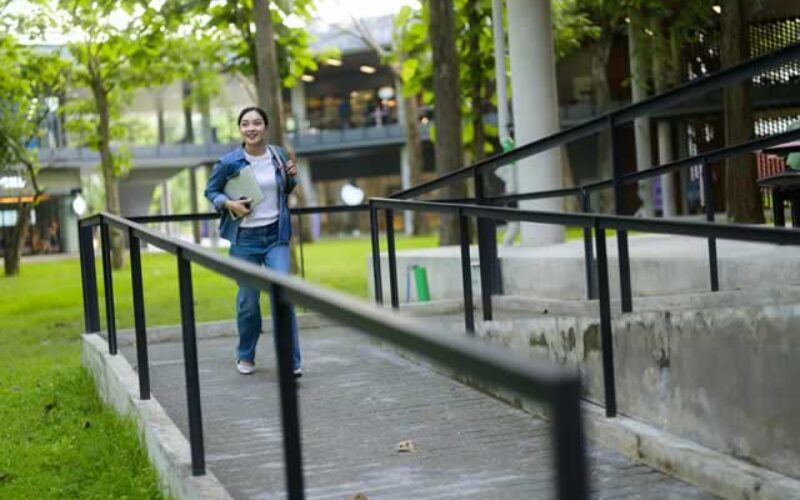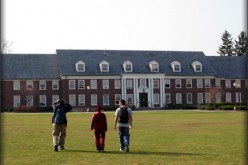A rising trend among institutions is the use of alternate campuses and staggered start dates. Not only does this approach address logistical hurdles, but it also boosts revenues and provides students with unique opportunities.
However, these strategies bring significant changes to the traditional freshman experience, raising questions about accessibility, fairness, and the future of higher education itself.
What are Alternate Campuses and Start Dates?
Alternate campuses refer to secondary or satellite locations where universities admit students instead of their main, flagship campuses. These campuses often cater to specific student populations or focus on niche programs.
Staggered start dates, meanwhile, deviate from the traditional fall semester model. Universities might admit students for spring or summer intakes, easing housing constraints and spreading campus resources more evenly throughout the year.
This trend offers practical benefits to both universities and students. For universities, utilizing alternate campuses allows better management of overflowing dormitories and pressure on facilities.
Seasonal start dates enable institutions to accept more students while maintaining a manageable campus population. For students, this path can provide access to unique programs or tailored learning environments unavailable on the main campus.
Institutions are increasingly turning to these strategies as a response to the challenges posed by record-high enrollment demands.
According to the National Center for Education Statistics, enrollment in degree-granting postsecondary institutions is projected to approach 20 million by 2026. Alternate campuses and start dates represent creative solutions to accommodate this growth sustainably.
Universities Leading the Way
Several prestigious universities are pioneering alternate campuses and start dates as part of their enrollment efforts. Northeastern University, for instance, has established campuses across major global cities, including London, Vancouver, and Oakland.
By doing so, the university offers students a global educational experience while alleviating the strain on its Boston campus.
Clemson University offers what it calls the "Bridge to Clemson" program, admitting students to an affiliated technical college for the first year. This arrangement helps manage housing shortages on Clemson’s main campus while ensuring students remain connected to the Clemson community.
Penn State has long embraced a multi-campus model, placing students at regional campuses for their first two years before transitioning them to the flagship campus at University Park. This strategy spreads out housing demands and utilizes underused regional facilities to their full capacity.
William & Mary, on the other hand, has adopted summer start dates for select students. By beginning their academic year ahead of the fall semester, these students bypass peak housing demands and pave the way for a smaller, tight-knit on-campus cohort.
These universities have successfully integrated alternate campuses and staggered start dates into their enrollment frameworks, proving that such strategies can become inherent to university culture.
Impact on the Freshman Experience
While innovative, alternate campuses and start dates noticeably alter the traditional freshman year experience. Historically characterized by joining large dorm communities and shared social rites of passage, the freshman experience now takes on a different shape in these models.
On alternate campuses, students may feel disconnected from the larger university culture present at main campuses. Smaller cohorts can foster close relationships but may lack the wide variety of extracurricular activities and networking opportunities.
Similarly, students starting their academic journeys in the spring or summer may face challenges integrating with established fall semester peer groups.
However, these models offer unique opportunities as well. Smaller initial cohorts can ensure more personalized mentorship and reduced class sizes. Alternative campuses often provide specialized program access, giving students unique academic experiences unavailable to their main-campus peers.
The key to success for students navigating these changes lies in adaptability. Universities must also engage robust support systems to help students thrive within these reimagined environments.
Financial Implications and Revenue Strategies
From an institutional perspective, the financial benefits of alternate campuses and start dates are hard to ignore. By accommodating more students without overhauling infrastructure, universities can drive revenue growth while fulfilling broader access goals.
Targeting full-pay students, particularly international enrollees, often plays a significant role in this strategy. International students, less dependent on financial aid, make attractive candidates for offsetting operational costs. For universities investing heavily in global campuses, these students represent revenue streams that sustain the expansion of such ventures.
However, these strategies aren’t without economic consequences for students. Those attending alternate campuses may incur higher living costs if the campuses are located in expensive areas. Meanwhile, students beginning in non-traditional semesters may find fewer opportunities for part-time work or involvement in programs designed for fall entrants.
Universities must carefully balance their financial incentives with their responsibility to make education equitable and accessible for all, regardless of socioeconomic background.
Ethical Considerations and Criticisms
The rise of alternate campuses and start dates has not occurred without its share of criticisms. One common concern revolves around equity. Critics argue that these strategies disproportionately favor students who can afford to pay full tuition and those who live close to alternate campuses.
This trend also raises questions about transparency. Prospective students and their families may not fully understand the implications of attending a secondary campus or entering on a non-traditional start date, only learning of the limitations once admitted into the program.
Long-term, universities must also grapple with potential implications for their culture and reputations. If main-campus students are perceived as the "priority" cohort, universities risk creating divisions within their student bodies.
Reputationally, relying too heavily on these strategies may overshadow academic achievements and lead to criticism for prioritizing revenue over educational quality.
To address these ethical concerns, universities need to maintain clear communication with prospective students about what they can expect from these programs. Investments in equalizing opportunities and resources across campuses will also go a long way in bridging divides.
The Future of Higher Education Enrollment
Looking to the future, alternate campuses and start dates are unlikely to remain niche solutions. The model offers too many advantages in managing resources and expanding institutional reach. And as technology advances, universities will likely layer in virtual campuses or hybrid models, expanding definitions of traditional enrollment further.
The integration of online learning could provide even more flexibility for students, allowing them to split their campus attendance between physical and virtual environments. Additionally, as artificial intelligence advances, universities may incorporate AI-driven enrollment systems to personalize admissions further, placing students in locations and terms best suited to their needs.
Education is in a state of rapid transformation. To remain competitive, universities will continue innovating their enrollment strategies, adopting models that redefine what it means to be a college student in the 21st century.
other related articles of interest:
Navigating the Changing Landscape of Enrollment
Alternate campuses and staggered start dates reflect how universities are rethinking traditional approaches to higher education. While offering exciting opportunities, these models also require students, parents, and educators to adapt to fresh challenges.
For prospective students, understanding these changes is essential to making informed decisions about their education. By exploring the benefits, limitations, and realities of these strategies, you can find the path that best aligns with your goals and aspirations.
Education is evolving, and being informed today will help you thrive tomorrow.
Image Credit: by envato.com
end of post … please share it!
PAYING FOR COLLEGE: getting the aid you need
-------------------------------------------------------------------------------------------------------------
end of post idea
-------------------------------------------------------------------------------------------------------------
view home improvement ideas at our Photo Remodeling center
Helpful article? Leave us a quick comment below.
And please share this article within your social networks.











